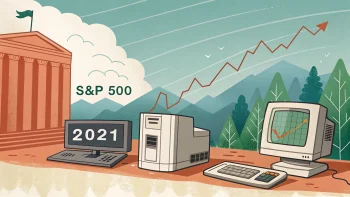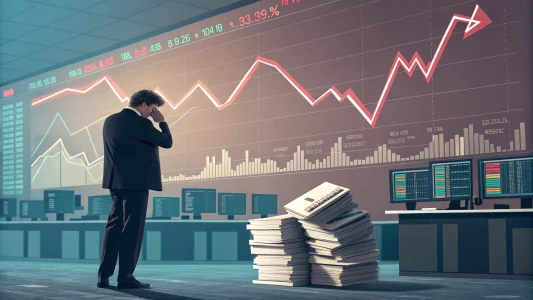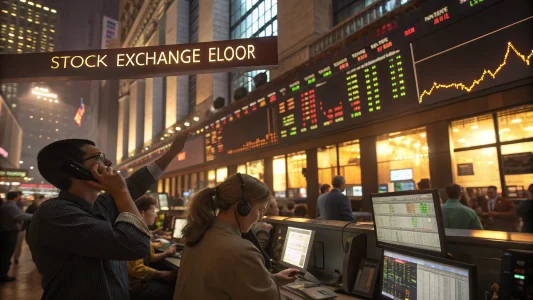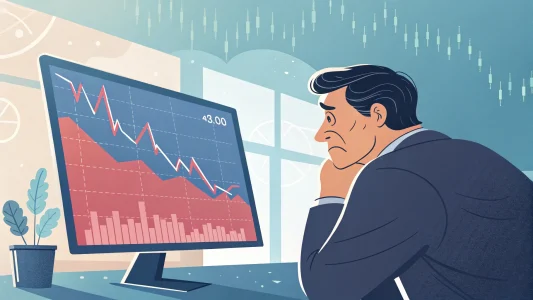The global economy’s future hangs in the balance as the United States witnesses an intense battle between two of the most influential figures in the economic landscape – President Joe Biden with his odd budget and Federal Reserve Chairman Jerome Powell. Both individuals harbor specific missions in their fight for the US economy. The question looms: who will emerge victorious in this clash of economic titans?
Join us as we delve into an in-depth analysis of the struggle between Biden and Powell, complete with unbiased insights and factual observations, as they grapple with safeguarding the nation’s economic stability.
View this post on Instagram
A post shared by Taylor Sohns- CFP®, CIMA®, MBA- Finance (@lifegoalinvestments)
Table of Contents
ToggleThe Key Players and Their Objectives
Joe Biden, the 46th President of the United States, is driven by one paramount goal: to avert a recession at any cost, especially in the context of his re-election bid. With dwindling approval ratings and a relatively feeble economy, Biden has implemented assertive measures to steer the US away from the precipice. To accomplish his mission, the federal government has injected funds into the US economy through diverse stimulus and spending programs.
See Also: Biden’s Plan for Retirement Savings
On the opposite side of the ring stands Jerome Powell, the Chairman of the Federal Reserve. His central aim is to quell inflation at all expenses, even if it requires unconventional maneuvers to maintain the economy’s vital signs.
Powell has propelled the Fed to elevate interest rates at a pace unseen since 1981, simultaneously shedding the Fed’s balance sheet through quantitative tightening. The divergence in their objectives is stark: Biden is keen to propel growth through aggressive expenditure, while Powell is resolute in curbing inflation’s advance.
The Battle So Far
The fiscal year preceding May 2022 witnessed the US government allocate a total of $6.7 trillion – merely $900 billion shy of the zenith of the COVID-19 crisis, during which the government was actively combatting an economic collapse. The unparalleled expenditure channeled through stimulus checks and PPP (Paycheck Protection Program) loans was predominantly fueled by Biden’s endeavor to avert an economic recession during his tenure.
Jerome Powell accelerated interest rates and enacted quantitative tightening policies as a countermeasure. These measures had proven effective in constraining the money supply (M2) until Biden’s stimulus expenditure in April triggered a resurgence in M2 levels. This upsurge in M2 undermines Powell’s attempts to tame inflation, subtly reinforcing Biden’s advantage in their ongoing contest.
The Consequences of Money Supply Expansion
The battle against inflation might seem abstract, yet its implications are profoundly tangible for the average American. As M2 levels expand, the money in circulation correspondingly surges, directly influencing the inflation rate. Over time, heightened inflation can yield dire outcomes for consumers and enterprises.
In the absence of fiscal restraint, escalating inflation could materialize, further complicating the ongoing skirmish between Biden and Powell, potentially culminating in an inflationary spiral with extensive ramifications.
The Future of This Struggle
While Joe Biden enjoys a slight lead, the ultimate victor in the confrontation between these two heavyweights remains uncertain. The outcome hinges on the respective aftermaths of their actions on the US and global economies.
Prolonged overspending by the federal government may instigate increased inflation. At the same time, the Fed’s assertive interest rate hikes and quantitative tightening could curtail the economic growth necessary for a sustained recovery.
The battle between these two financial stalwarts is far from its resolution, and only time will unveil the ultimate champion. Amid these uncertain times, the aftermath of their collision will bear significant implications for the US economy, the international stage, and the lives of countless Americans.
Conclusion
The ongoing clash between Joe Biden and Jerome Powell pledges to mold the trajectory of the US economy as both leaders strive to attain their distinct aims. With Biden’s crusade to evade recession and Powell’s determination to subdue inflation, the ultimate victor in this power struggle will exert a lasting influence not solely on the American economy but also on the global economic panorama.
As the world watches with bated breath, comprehending this high-stakes economic showdown’s stakes, strategies, and potential consequences becomes indispensable.
Frequently Asked Questions
1. Who are the key players in the battle for the US economy’s future?
The key players are President Joe Biden and Federal Reserve Chairman Jerome Powell. They both have distinct objectives in their efforts to shape the economic landscape.
2. What is President Joe Biden’s primary goal?
President Biden’s primary goal is to prevent a recession during his re-election bid. He has been implementing aggressive measures, including stimulus packages and spending programs, to boost the US economy.
3. What is Jerome Powell’s main objective?
Federal Reserve Chairman Jerome Powell’s primary objective is to curb inflation at all costs. He has employed unconventional tactics, such as raising interest rates and quantitative tightening, to stabilize the economy’s key indicators.
4. How has each player’s approach differed in their battle?
Biden is focusing on stimulating growth through aggressive spending, while Powell is prioritizing the containment of inflation through measures like interest rate hikes and quantitative tightening.
5. How has the battle played out so far?
The US government’s spending reached $6.7 trillion in the fiscal year leading up to May 2022, primarily driven by Biden’s efforts to prevent a recession. In response, Powell raised interest rates and implemented quantitative tightening, with some success until Biden’s stimulus spending led to increased money circulation (M2), countering Powell’s efforts.
6. What are the consequences of increasing money supply (M2)?
An increase in money supply can directly contribute to rising inflation. This has tangible impacts on consumers and businesses, potentially leading to severe consequences if inflation spirals out of control.
7. What could the future consequences of this battle be?
The outcome of the struggle between Biden and Powell will hinge on the effects of their actions on the US and global economies. Overspending by the government might lead to higher inflation, while the Fed’s aggressive measures could hamper essential economic growth for recovery.
8. Who currently holds the edge in the battle?
Joe Biden holds a slight edge due to his stimulus spending, which counteracted some of Powell’s inflation-curbing measures. However, the ultimate winner’s identity remains uncertain.
9. What is the significance of this battle for the US and global economies?
The outcome of this battle will have a lasting impact on both the American and global economic landscapes. The winner’s strategy, focusing on growth or inflation control, will shape economic trajectories.
10. How will the conclusion of this battle be determined?
The outcome will be determined by the consequences of the actions taken by Biden and Powell on economic stability, growth, and inflation rates. Time will be the ultimate judge of their effectiveness.
11. What’s the larger significance of this battle for the lives of everyday people?
The outcome will directly impact the lives of millions of Americans. The economy’s direction will affect jobs, prices, and overall living standards, making it crucial for individuals and families.
12. What can we expect from the ongoing struggle between Biden and Powell?
The battle between these economic leaders is far from over. The strategies they employ and the consequences of their actions will continue to influence economic conditions in the US and beyond.
13. How can we understand the stakes and potential consequences of this economic showdown?
To comprehend the stakes and implications, following the battle closely, analyzing the strategies used, and staying informed about the ongoing economic developments as Biden and Powell navigate their respective goals is essential.
Featured Image Credit: Photo by Kelly, Pexels; Thank you!

















